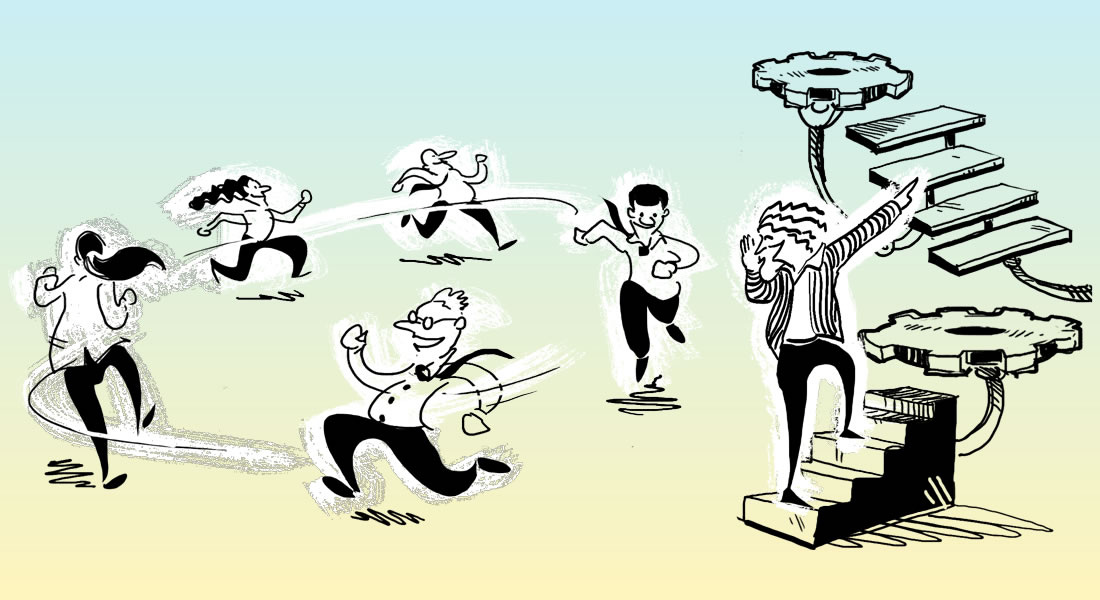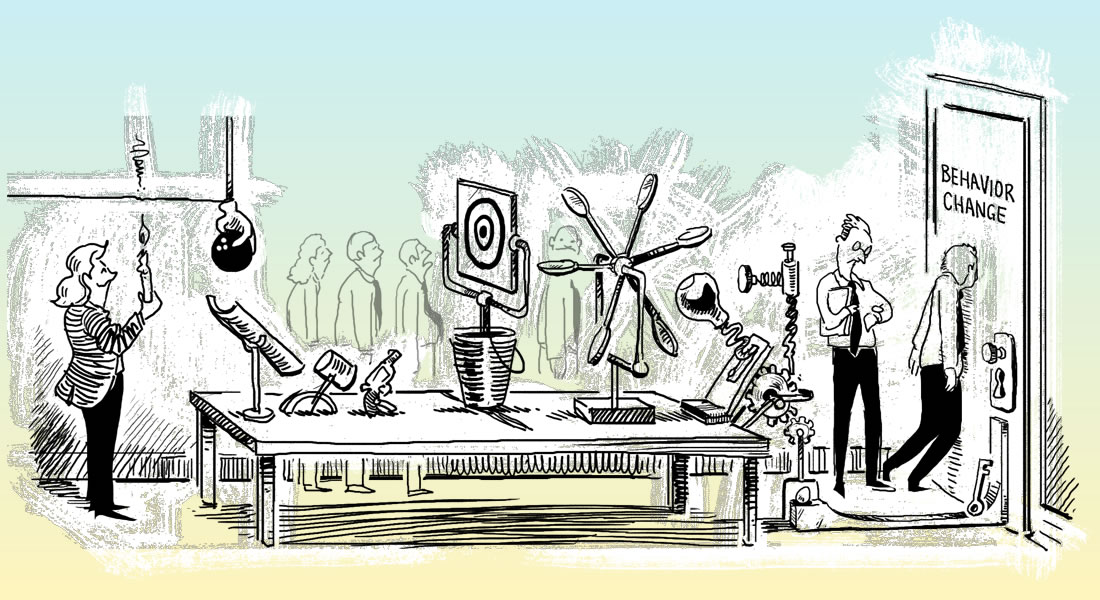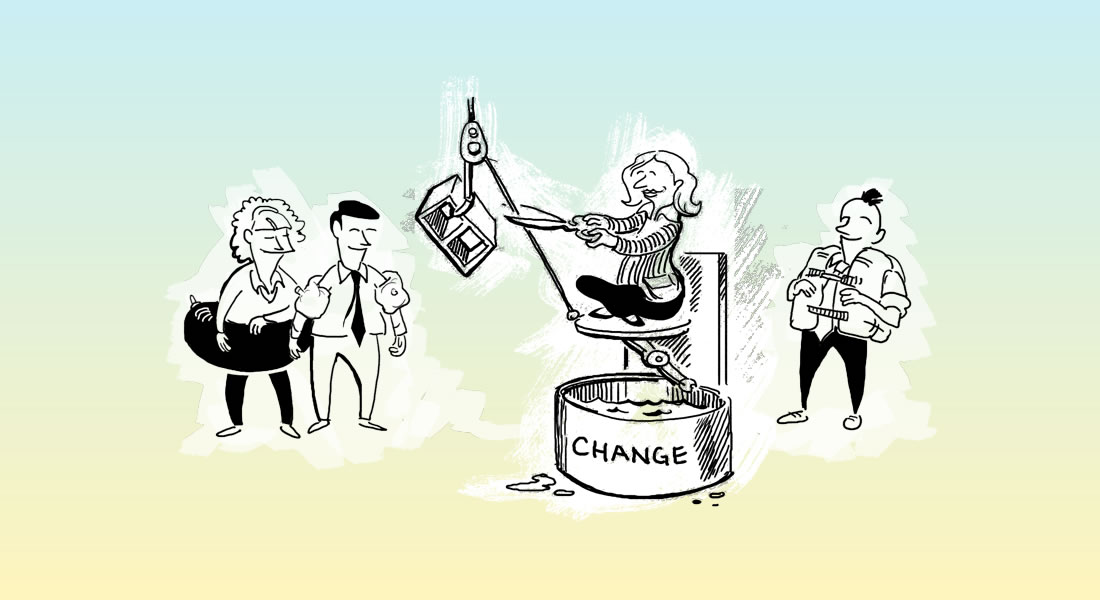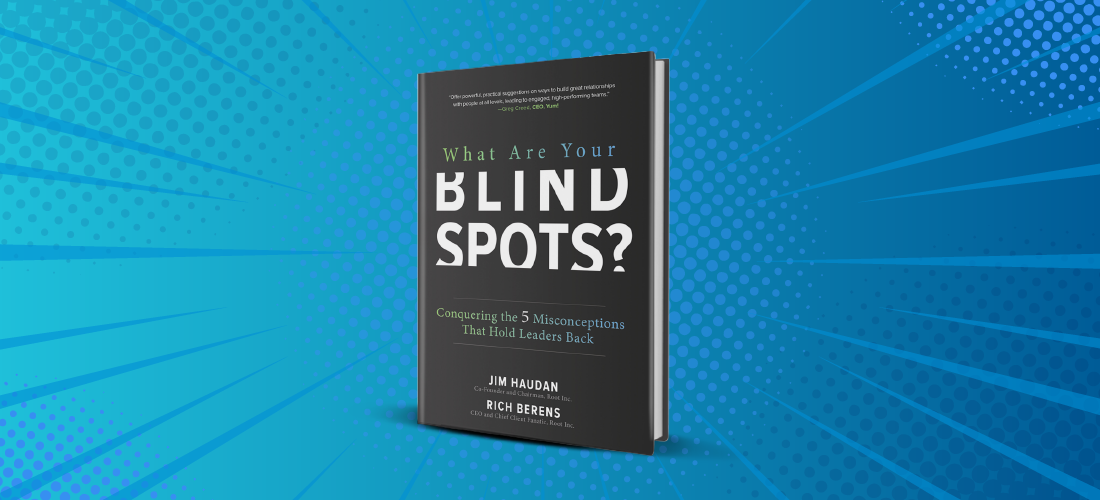Propelling Successful Change From the Top Down
The purpose of strategic planning is not to make plans. It is to change the way we think and act. If newly formed visions and strategic plans are intended to propel organizations to places they have never been, then they also require individuals to do things they have never done before. The fact is, successful change is all about behavior. The “act” trumps the “think” every time. Successful strategic deployment requires changing behaviors and it all starts with leaders.
Several years ago, a Fortune 300 company was preparing its strategic plan for launch at a January meeting of their top several hundred leaders. For three days, the leaders discussed the merits of the plan and the critical actions required to get results. The group seemed engaged. Just before the close of the three-day meeting, each person in the audience was given a device to anonymously vote on how confident they felt about the new strategy. The senior team assumed they’d get commitment and widespread support from the top leaders who had participated in the event.
But what flashed on the screen wasn’t what anyone expected… a stunningly low 19 percent vote of confidence by the top leaders of this 53,000-person company.

After the shock wore off, the executive team asked for reasons behind the mass skepticism. It turned out the lack of endorsement was because of straight up hypocrisy. The skepticism was rooted
in the a belief that senior leaders would be unable to change “old strategy” behaviors. It was eye-opening for the leaders, but once they got the message and corrected their personal behaviors, the strategy took off and drove the stock price to double.
Kick-Starting Behavioral Change
Deeply embedded behaviors change much more slowly than marketplace factors and new strategic thinking. The speed at which leaders change their behaviors becomes the pace car for rolling out a new strategy or initiative.

Root has identified three key areas where leaders must focus to turbocharge the organizational change race:
Be publicly vulnerable
Creating change across the organization requires leaders to take a good hard look at their reality. Organizations must ask themselves some tough questions:
- What does the current state of the business look like?
- What gaps or barriers exist?
- Why are they having these challenges?
- What’s good or bad about the company’s culture?
This only works if leaders go first in being brutally honest about the behaviors they must personally change. By going first in identifying their own behaviors that are inconsistent with the new strategy, they send two critical messages:
- They set a precedent for others to be vulnerable, and acknowledge the importance of embracing the discomfort associated with dropping old behaviors and adopting new ones.
- They signal it is safe to talk about other company weaknesses, which encourages managers and employees to make suggestions for changing behaviors, practices, rituals, habits, and routines that are critical to the new strategy succeeding.
Let go
Letting go is hard, but essential to successful change. One organization about to launch its new strategy involved former IBM CEO Lou Gerstner in the process. Gerstner shared that during the IBM transformation of the late 90s, he constantly used Tarzan as a metaphor. He encouraged leaders to think of their role of leading change as them swinging through a jungle, letting go of the vine of the business and grabbing the vine of the new business that they were creating – all with the threat of hungry lions below and the horizon of success slightly visible through the trees.

Letting go of the business we know means letting go of the actions, behaviors, and roles that have long provided a sense of value, achievement, and recognition. It also means people must let go of what they may be great at in favor of developing the new skills vital for the new change to succeed. We find that at the heart of letting go is a willingness to take the risk of doing something new that we may be bad at for a while. This is critical to the business of the future.

Build speed through trust
To be successful with any new strategy, it is important for leaders to establish trust with everyone involved. When leaders prioritize behaviors that build trust, and follow a set of common beliefs as ground rules, they can execute more quickly and drive strategic change more effectively. As trust goes up, transaction cost and time to results go down. Here are the top eight behavioral ground rules that my 20 years counseling leading organizations has made clear:
- Assume positive intent and trust the experts.
- In the face of ambiguity, it is our responsibility to achieve clarity for ourselves and our people and not stop until we do.
- Balance the need to make fact-based decisions with the urgency to act before we have complete information.
- Own the whole of the business before your piece.
- Have open, honest, candid, and direct conversations that are tough on the issues and respectful of the people. (Don’t say it in the hall if you won’t say it at the table.)
- Decisions made in the room must be publicly supported outside the room. If decisions need to be reconsidered, they must be brought back to the team.
- Rapidly share learnings that are uncovered in success or failure.
- Support and encourage telling the truth about execution without being executed.
Once you have ground rules in place, you must rank them in importance and take an honest look at how well you do each one of them. Identify the biggest gaps and identify a plan to close them with specific new behaviors.

“It is our responsibility to lead change, build a team, and make it personal. And it starts with me. If the organization is going to change, I must change first, and in that regard I can’t be constrained by any friendship, past relationship, or position of a leader.”
CEO of that Fortune 300 company
While this is easier said than done, it is that sentiment and that mentality that has a profound effect on whether an organization can successfully execute its strategy. Leaders who don’t step into the discomfort of changing their own behavior will find what they are waiting for will never come. The emotional and behavioral change we expect of others must first be the expectations of ourselves.







